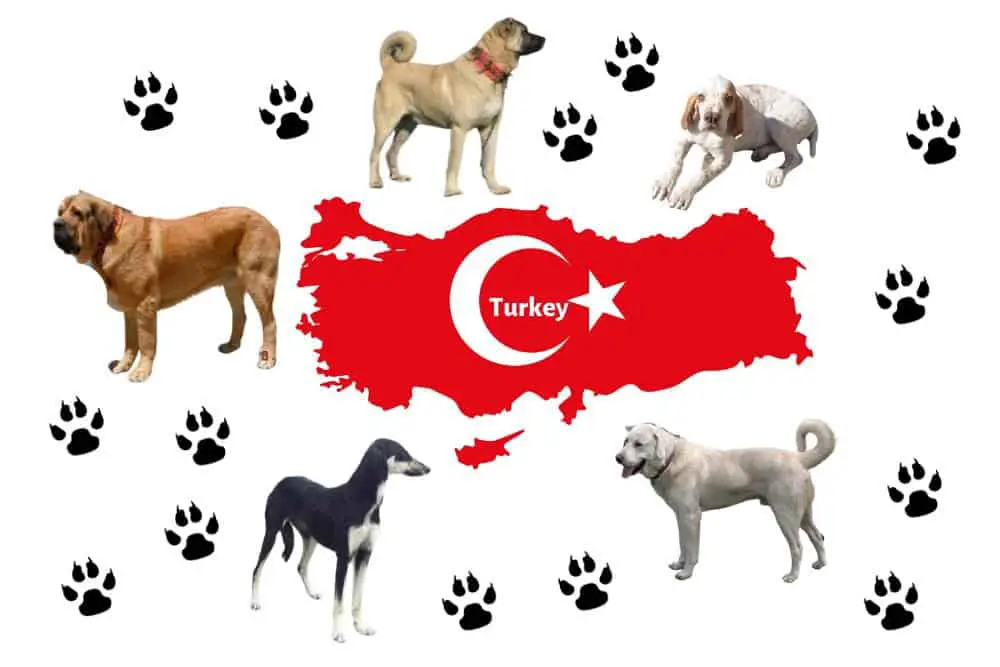After doing some research, I found that Turkish dog breeds are very popular as herd-protecting dogs.
But sadly, there are an estimated 130,000 stray dogs roaming the streets of Istanbul alone at any given time.
But why is the stray dog population such a problem?
We’ll answer this in a bit.
So, what types of dogs come out of Turkey?
Let’s get started.
Start Watching or (Reading)
1. CATALBURUN (Turkish Pointer)
Highlights: Agile, intelligent, endurance
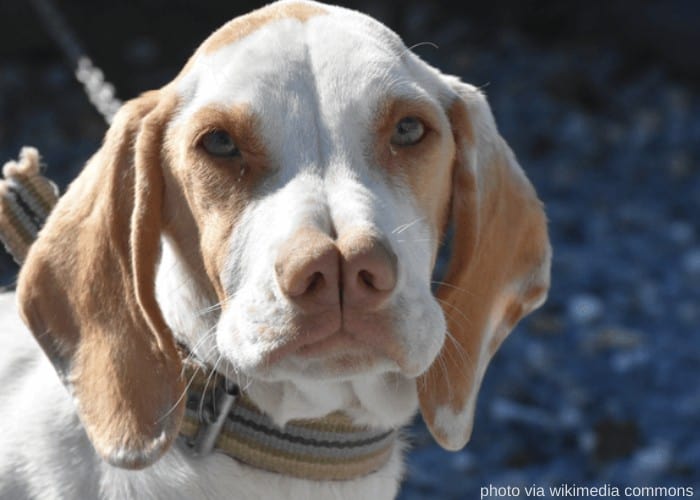 The Catalburun or Tarsus Catalburun dog breeds have a quite unique appearance and are best known for their split or double nose.
The Catalburun or Tarsus Catalburun dog breeds have a quite unique appearance and are best known for their split or double nose.
Aside from the Catalburun, there are only two other breeds that have this characteristic – the Pachon Navarro and the Andean Tiger Hound.
Aside from the double nose, there are no specific standards for the Catalburun dog. As a result, there can be a great deal of variability in appearance.
With that being said, the Catalburun is a type of Pointer and bears a great deal of resemblance to other pointer breeds.
They have wide, floppy ears that hang down, and have a coat that is flat, short, and stiff to the touch.
Catalburun’s are all piebald and come in several different color patterns including yellow and white, orange and white, red and white, or black and white.
The exception to this rule is dogs that are tri-colored, which are usually black, tan, and white.
DID YOU KNOW?
- The Tarsus Çatalburun is not officially recognized as a breed.
- Due to their double noses, the Catalburun is considered to be one of the most unique looking dogs in the world.
- The Catalburun is the only recognized scenthound dog in Turkey.
- the Catalburun is being used in the police force as a sniffer dog for narcotics, explosives and for finding living and dead people.
- It is estimated that there are only about 200 Catalburun left in the world today.
Temperament:
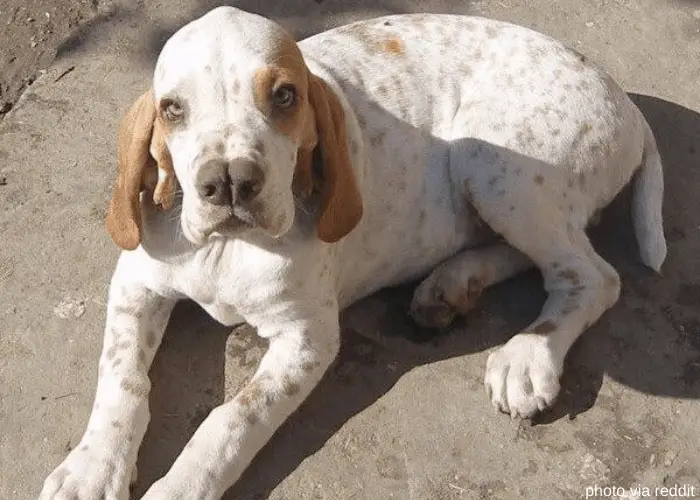
The Catalburun is one of Hunting Dog Breeds Of Turkey.[1]
Being of the Pointer family, these dogs have a strong prey drive and excellent tracking abilities.
For this reason, they are often used by police in narcotic searches, and in search and rescue missions.
The Catalburun is a generally even-tempered and well-rounded dog but can be dominant and territorial.
Much of how they react to situations depends on their training. A dog who is well-trained plays well with others, as well as with children, but a dog that does not have good training can become aggressive.
The same stands true for strangers. A Catalburun that is well-socialized as a puppy will guard the house simply by barking, but an unsocialized Catalburun may become aggressive and even attack.
The Catalburun likes to be inside with their family but does have a great deal of energy to expel.
Unless they have plenty of daily exercises, they aren’t likely to do well in an apartment setting. While they are a relatively quiet breed, they do require room to run and roam.
History:
The Catalburun is native to the Tarsus region of Turkey.
It is thought that the Catalburun breed is a descendant of European Pointers and hounds, though it’s exact origins are unknown.
Some historians also suspect that the Catalburun may have some Greek Pointer DNA as well.
Today it is extremely difficult to have the Catalburun exported from Turkey, and therefore is very rarely seen outside of the country.
Though there are some left in Turkey, they are extremely rare. Due to their rarity, most of the Catalburun seen in Turkey today have been inbred, and are subject to a variety of hereditary health issues such as the ones listed above.
While some are trying to get the breed recognized by an official registry, there is not yet any particular standard for the Catalburun.
[table id=63 /]
# Hip dysplasia, * Cleft Palate
2. KANGAL SHEPHERD DOG
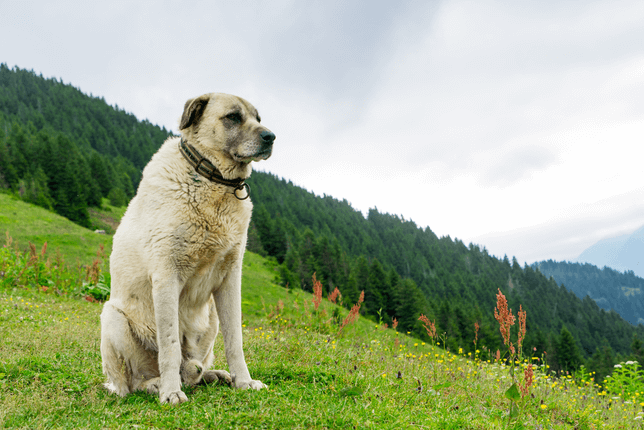
Highlights: Calm, Powerful, Protective
The Turkish Kangal a.k.a. Anatolian Shepherd Dog is a large breed that stands between 28-32 inches tall and weighs between 90-145 pounds.
The breed is a Mastiff-type dog that is well-proportioned and very muscular. They have a large, broad head with a black facial mask that covers the muzzle and the eyes.
The breed has large, floppy ears, and a long tail.
They have a double layer of fur that is extremely dense. Aside from the facial mask, the Kangal Shepherd is a solid-colored dog that comes in shades of fawn, cream, and grey. In rare cases, puppies may be brindle, but in such a case would not be permissible in dog shows and competitions.
DID YOU KNOW?
- Many breeders experiment with breeding Kangal Shepherds with Pit Bulls and Wolves to create a dog that is even more powerful and fierce than the Kangal itself.
- The Kangal Shepherd has an impressive life expectancy for a large dog breed – 12-15 years.
- While most Kangal Shepherds have long, floppy ears, they can also be cropped. ‘
Temperament:
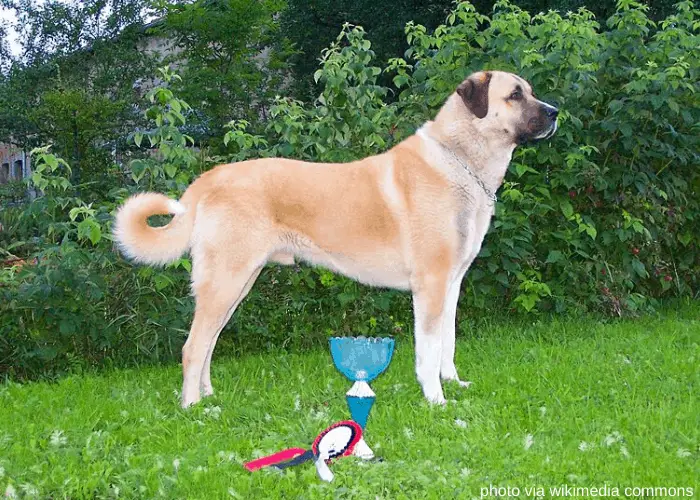
Despite its intimidating size, the Kangal Shepherd has a calm, controlled, and reliable temperament.
The dogs were originally bred for guarding sheep, and aggression toward sheep was not tolerated by owners.
In return, the dog developed into a very gentle and peaceful breed. While they are protective, they are not aggressive.
Because they were trained to watch over other animals, the Kangal does well with other dogs and pets.
They also do well with children, and it should come as no surprise if they are often found standing watch over a child or “guarding them”.
Keep in mind however that the Kangal Shepherd is a working dog. When not given a job to do, they can become destructive in a home.
In return, they are best suited to homes with large yards or farms. They are not recommended for apartments or small homes.
History:
The exact origins of the Kangal Shepherd are up for debate. With that being said, it is known that the breed originated in Turkey, where it was used in ancient times for guarding flocks.
The breed gets its name from the Kangal District of Turkey, which is likely where it originated.
It is thought that this breed is a descendant of ancient Mastiff-type dogs. Many also argue that the Kangal Shepherd may be the same breed as the Anatolian Shepherd, another Turkish breed of dog. With that being said, it is currently accepted that they are a separate breed.
The Kangal Shepherd was originally introduced to the UK in the 1960s and made its way into the United States in the 1980s. Today, it is relatively rare in Turkey, and even rare in the US.]
[table id=64 /]
+ entropion
FAQs
1. Is the Kangal the strongest dog?
According to a study conducted, the Kangal Shepherd dog has the hardest bite- with a force of 743 psi!
2. How much is a Kangal Dog?
Please see “Breed Overview” for the price.
3. AKBASH DOG
Highlights: Calm, Alert, Protective
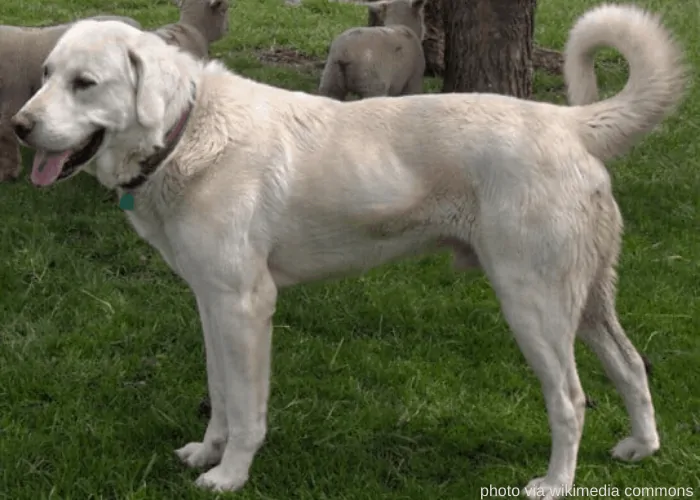 The Akbashs are large breeds of dogs that weigh between 90-130 pounds and stand between 28-34 inches tall.
The Akbashs are large breeds of dogs that weigh between 90-130 pounds and stand between 28-34 inches tall.
They are a very long-legged, tall, muscular breed.
The Akbash has a large, broad skull with powerful jaws and a scissor bite. They have high-set, V-shaped ears that flap down, though some may also have cropped ears.
The tail of the Akbash is long and tapering and may be carried in a hook shape, or high above the back depending on whether they are relaxed, excited, or agitated.
The Akbash can have either medium or long fur, depending on where they are bred and raised. They only come in one color – white, though they may have shadings of biscuit or grey in their undercoat.
DID YOU KNOW?
- Though the Akbash is not an overly active breed, it still has the power and agility to fight off predators like Wolves
- The Akbash is considered to be the National Dog of Turkey
Temperament:
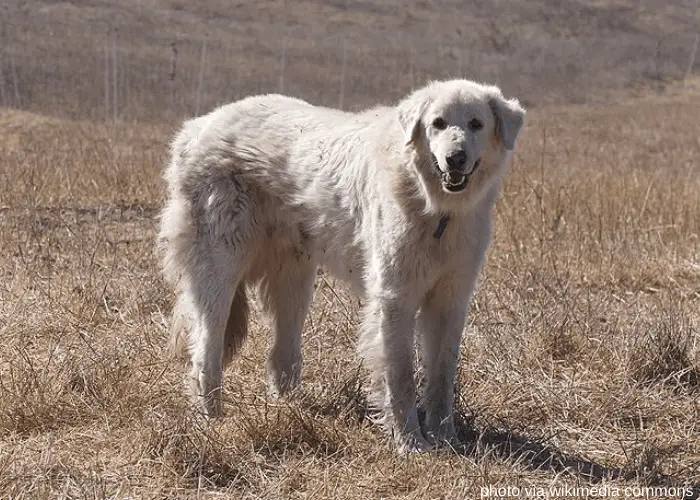
The Akbash is a working breed of dog that was most commonly used in history to guard flocks.
In return, they have a great sense of sight and a great sense of hearing that make them excellent guardians around the home.
Though you might expect them to have a lot of energy, the Akbash spent much of its time in history standing guard over the flocks and required little running.
In return, they grew to be low-energy dogs. With that being said, they are still very athletic and do require room to roam. The Akbash do better in larger homes with yards than they do in apartments.
The Akbash is an extremely intelligent dog, but can also be very strong-willed and stubborn.
Though they are very capable of learning quickly, they often think that they know better than their owners, and may not respond to cues well.
To train properly, they require a strong, dominant owner that can provide the dog with commitment and consistency. They are not a good choice for first-time dog owners.
This dog bonds intensely with its owners, and in history, also bonded well with the livestock it protected.
It has a strong maternal instinct and bonds well with other animals, especially when introduced at a young age.
With that being said, because the breed bonds so strongly with others, it can become very protective, and even aggressive, if it feels that strangers are threatening their flock.
With their owners, they are gentle and affectionate and make fantastic companions. They are good with children and will guard their loved ones with their lives.
History:
The Akbash is a Turkish breed of dog with origins that are thought to date back to 3000 years ago.
They were originally bred by Shepherds who used them to protect their livestock from predators.
While there are no actual photos of Akbash dating back that far, there are accounts that describe the breed as sport spiked collars to protect their necks from predators.
Their exact lineage is unknown, but it is thought that they may share DNA with several different breeds including the Pyrenean Mountain dog, the Komondor, and the Tatra Mountain Sheepdog.
They are still commonly used for guarding sheep but are also used in the US as service dogs.
The Akbash is not currently recognized by the AKC but is recognized by the UKC.
[table id=65 /]
Related Questions:
1. How much does an Akbash dog cost?
The average puppy price is around 700-900 USD.
2. How long do Akbash dogs live?
10-11 years.
4. AKSARAY MALAKLISI DOG (Turkish Mastiff)
Highlights: Active, Independent, Hard-working
 The Aksaray Malaklisi dog a.k.a. Central Anatolian Shepherd is a large breed of dog that stands between 70-85 cm tall at the shoulder and weighs between 120-150 pounds at maturity.
The Aksaray Malaklisi dog a.k.a. Central Anatolian Shepherd is a large breed of dog that stands between 70-85 cm tall at the shoulder and weighs between 120-150 pounds at maturity.
They have ears that flop down and a long tail that curls at the end.
The Malaklisi has an upper lip that covers the lower lip, that hangs down. It has saggy skin and a short but thick coat of fur. The coat can be any color but is most commonly white cream or sesame.
DID YOU KNOW?
- The Aksaray Malaklisi is sensitive to anesthesia
- The Aksaray Malaklisi is often referred to as the “lion dog” for its massive size and fierce attitude.
-
Their name originates from a Turkish word used in Aksaray, “malak” meaning lip, and “malaklı” meaning “with lips” due to the breed’s black, dropped, notable lips. -Wikipedia
Temperament:
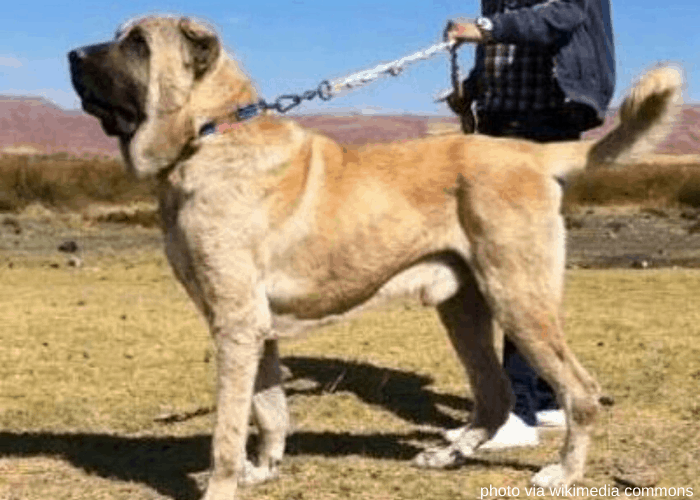
The Malaklisi is a very intelligent breed of dog, that is also very dominant and independent. Like most livestock guardian breeds, these dogs have a mind of their own.
While they are considered to be a very calm, friendly, and affectionate breed, they can also be very protective of their family.
When it comes to strangers or outsiders, the Malaklisi can be very reserved and unfriendly. They are good with children and will guard the ones that they love with their lives.
Having said all of that, much of Malaklisi’s personality depends on the way they are raised.
Temperament may be affected by heredity factors, but can also be affected by training and socialization.
Because this breed is so independent-minded, proper training and socialization are required at a young age. Puppies that are well-socialized will be playful, curious, and accepting of others.
History:
The Aksaray Malaklisi dog is thought to have originated over 6000 years ago in Anatolia Turkey.
It is believed that Mastiff-type dogs were brought over by Asian tribes, who were then bred with sighthounds to eventually create the Aksaray Malaklisi. As the nomadic tribes traveled, so did the dogs, and they were used to guard flocks of sheep and other livestock.
[table id=66 /]
5. TURKISH KOPAY (Turk Izci Kopegi Zagar)
Highlights: Smart, Loyal, Energetic
 The Turkish Kopay is a large breed of scent hound that stands between 48cm to 52cm tall and weighs between 17-19kg.
The Turkish Kopay is a large breed of scent hound that stands between 48cm to 52cm tall and weighs between 17-19kg.
They have ears that flop down, and a long tail that stands erect when alert.
The coat of the Kopay is short and fine, and usually comes in black, tan, or a mixture of the two.
DID YOU KNOW?
- The Turkish Kopay was also known as the Turkish Chaser Dog of Zagar
Temperament:
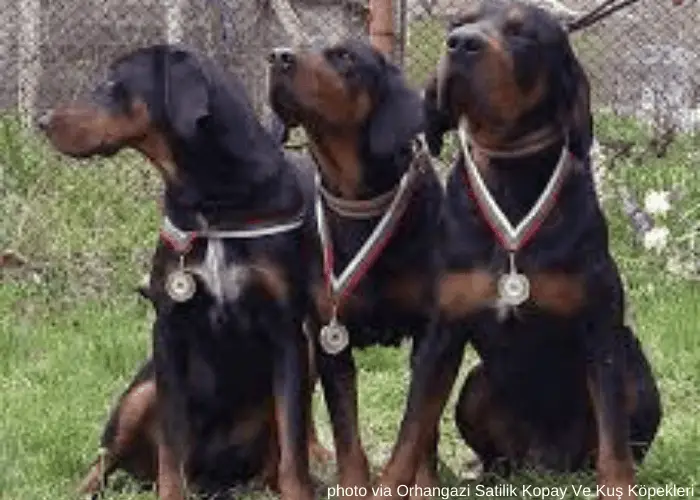
Unfortunately, the Turkish Kopay is an extremely rare breed of dog that is almost extinct.
With that being said, they are thought to be a loyal, intelligent, and energetic breed of dog that requires a strong leader who can provide strict and consistent training.
History:
The Turkish Kopay is a type of sighthound that was typically used for hunting in history.
They were bred by the Yoruk people in a variety of different regions throughout Turkey and were noted for their ability to hunt hares. They often hunted in pairs or in small groups.
Currently, the Turkish Kopay does not have any registered breed standards and is not recognized by any official organizations.
There is not a lot of information regarding their breed overview as well as grooming, health issues, price, etc.
6. Turkish Tazi (Turkmen Tazi)
Highlights: Fast, Loyal, Child and Other Pet-Friendly
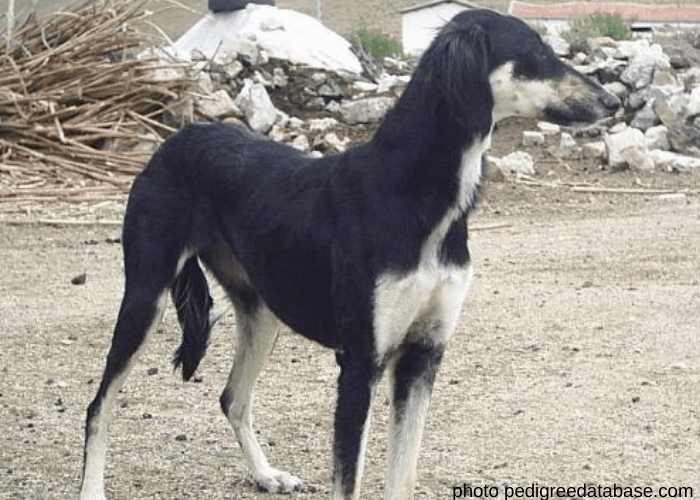 The Turkish Tazi is a classic sighthound-greyhound that can be found in Central Anatolia and Southeast Anatolia in Turkey.
The Turkish Tazi is a classic sighthound-greyhound that can be found in Central Anatolia and Southeast Anatolia in Turkey.
It has a resemblance to the Saluki dog but is slightly larger. The Turkish Tazi has long front and hind legs, a slim body, a tail that is thin with no hairs, a long and slender skull, a long neck, a deep chest, and a flexible and curved spine.
Because of their superior skills, they are being used in hunting quail, partridge, rabbits, and foxes, and for detecting and bringing back the prey that has been shot.
DID YOU KNOW?
- Turkish Tazi can hit a speed of up to 65 km/hr when hunting!
Temperament
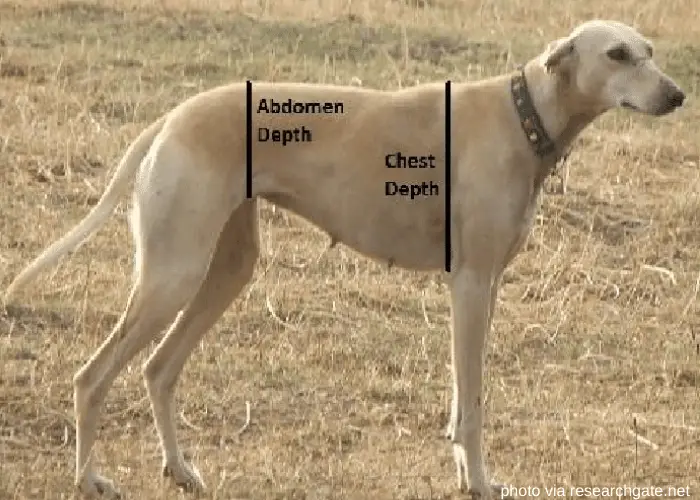
The Tazi has a loyal, mild, and affectionate character. It gets along well with children and other family pets including cats.
[table id=67 /]
7. KOYUN DOG (Bayburt Kelpi)
Highlights: (Not Enough Information)
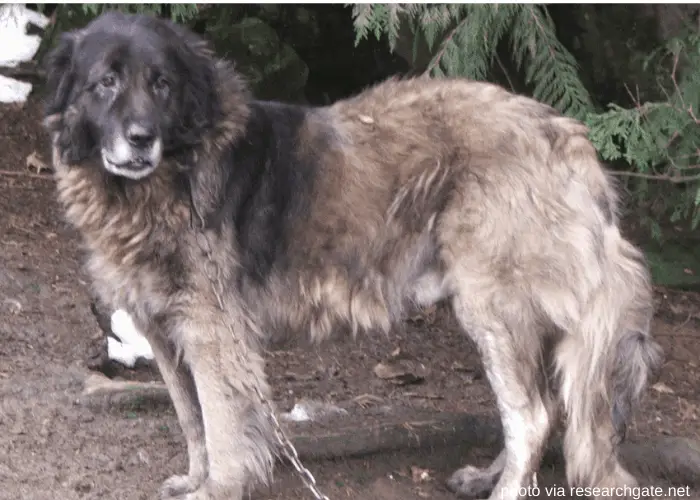 The Koyun Dog is a larger breed of dog that stands around 28 inches tall at the shoulders. They have a solid body with strong legs and a pendant-shaped tail that rises when on alert.
The Koyun Dog is a larger breed of dog that stands around 28 inches tall at the shoulders. They have a solid body with strong legs and a pendant-shaped tail that rises when on alert.
The breed can come in a variety of different colors, but dark grey is the most common. It’s not uncommon to see bi-colored Koyuns.
DID YOU KNOW?
The Koyun is also known as the “Babyburt Kelpi” locally.
Temperament:
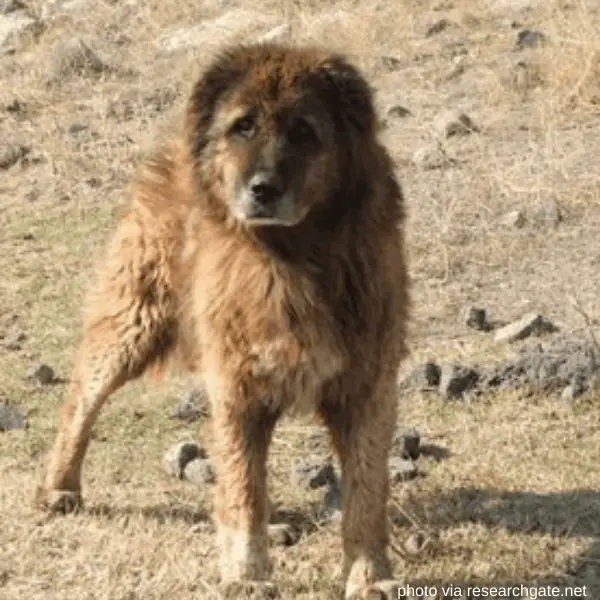
The Koyun Dog is another breed that there isn’t a lot of detailed information on. With that being said, they have been known throughout history as excellent working dogs and guard dogs.
The Koyun breed is happiest not as a family pet, but when it is given a guard job to do. They will protect their family and flock with their lives, and will always warn their owners when intruders are around.
History:
The Koyun breed originated in the Rize Province in Northeast Turkey. They are a molosser-type breed that is used to guard flocks and herds.
The Koyun is not extinct but is extremely rare. Currently, they can only be found in very small numbers in the provinces of Giresun, Gumushane, Babyburt, Erzurum, and Artvin.
*Some subheadings are not included because of insufficient information.
Turkey’s Stray Dogs Population Problem
Again, the question: “Why is the stray dog population such a problem in Turkey?”
The answer is two-fold.
Firstly, there are too many breeders that are just looking to make a quick dollar.
They over-breed their dogs and sell them to owners who cannot handle them. When they become too much to handle, they end up on the street.
Secondly, though efforts are being made to spay/neuter stray dogs, they cannot be made quickly enough to create any form of population control.
With that being said, unlike many countries with a large number of stray dogs (like India), the Turks don’t see the dogs as dirty or a nuisance.
Rather, stray dogs are quite welcomed in Turkey, so much so that you will often find water bowls and food dispensers along the highways to help feed the dogs.
CONCLUSION:
Many Turkish dog breeds are considered to be the world’s best herd-protecting dogs.
Sadly, however, many dog breeds that originated in Turkey are now starting to go extinct. Still, Turkey has an overwhelming population of stray dogs.
While these dogs are welcomed by the general population, it’s difficult to ensure that every single stray dog is fed and cared for equally.
As such, efforts are continuing to control the population.
If you or someone you know has time to donate, I encourage you to check out some of the ongoing efforts in Turkey.
Whether you can donate money to help feed the dogs or donate time in a care shelter – all efforts are welcomed to help these dogs stay fed and comfortable.
Here are the rest of Asian Popular Dog Breeds:
FOOTNOTE:
# 1. Hip Dysplasia
Hip Dysplasia is a common type of skeletal disease among dogs that occurs when the hip joints don’t develop properly. In such cases, the hips can dislocate and cause problems for the canine-like pain and difficulty walking.
Depending on the severity of the condition, dogs may experience minor or severe pain with hip dysplasia.
Signs and symptoms of hip dysplasia include, but are not limited to, limping, pain, difficulty moving around as per normal, and other changes in behavior.
In some cases, you may even be able to hear a clicking sound coming from the dog’s hips when they walk.
Diagnosis:
If your dog is showing signs and symptoms of hip dysplasia, they could be in pain and it is important to take them to a veterinarian as soon as possible.
A veterinarian will perform a physical examination wherein they determine the range of motion of the hip, as well as the looseness of the joint. If hip dysplasia is suspected, x-rays can be used to provide a definitive diagnosis.
Treatment:
Treatment of hip dysplasia may involve a variety of different options including changes to diet, supplements for joints, and anti-inflammatory medications. In some cases, physical therapy may also be suggested.
For more severe forms of hip dysplasia, surgery may be recommended.
* 2. Cleft Palate
A cleft palate is a condition that occurs when the tissues that form the palate of the mouth do not properly fuse together.
In such cases, this leads to there being an opening between the mouth and the nose. The condition is a birth defect, but can also cause troubles for puppies as they age.
Shortly after birth, a cleft palate can prevent a puppy from properly suckling milk, and can, therefore, lead to malnourishment.
If the cleft palate is not treated, it can also lead to more serious complications as food and fluid enter into the cavity.
A cleft palate is evidently visible at birth, but as a puppy continues to age, other symptoms can arise as a result.
These can include things like stunted growth, breathing difficulties, coughing or gagging, nasal discharge, infection, and even pneumonia.
Diagnosis:
Because a cleft palate is evidently visible, the condition is very straightforward to diagnosis.
Dogs with cleft palates will have a deformity of the upper lip, with nostrils that may be misshaped and teeth that may be showing.
Treatment:
Treatment for a Cleft Palate will depend on the severity of the condition, as well as the age of the dog.
Young puppies that have cleft palates may not be ready for surgery, and therefore need to be cared for properly until they are old enough to undergo surgery.
Caring for a puppy with a cleft palate takes a great deal of time and commitment from the owner, and will include a comprehensive feeding and care regime.
Once the puppy is old enough to undergo surgery, they will be taken into the hospital and put under anesthesia.
At this point in time, a surgical procedure will be performed to close the palate. One or more surgeries may be required for a full repair.
+ 3. Entropion
Entropion is a genetic condition that causes the eyelids to invert. It is fairly common among dogs and can lead to irritation or scratches on the eye.
When this happens, larger concerns like ulcerations or perforations may arise. If not dealt with properly, scar tissue can form and a dog can lose it’s vision either partially or completely.
Symptoms include inflammation of the eye, mucous or discharge from the eye, and an excessive amount of tears.
Diagnosis:
Because entropion causes visible inversion of the eyelid, it’s relatively easy to visually diagnosis.
Having said that, other eye diseases can cause similar symptoms. To rule out other conditions, an ophthalmic examination by the veterinarian will be necessary. Depending on the results of the exam, your dog may be sent to a specialist for additional testing.
Treatment:
Dogs with Entropion will require surgical correction. During surgery, a portion of the eyelid will be removed.
This will help to reverse the inversion. Depending on the case, further surgeries may be necessary.
If it is a puppy that is suffering from Entropion, surgery may not be optional until they reach 6 months to 1 year of age.
REFERENCES: ✍️
1.[^] Yılmaz, O. (n.d.). Hunting Dog Breeds Of Turkey. Retrieved from https://www.academia.edu/36300712/Hunting_Dog_Breeds_Of_Turkey.

